(Above) A team from the Ont. Div spent two weeks doing construction work on Salvation Army facilities in Kingston, Jamaica, in February
In the January/February 2024 edition of Salvationist magazine I wrote about the importance of sacred spaces, and mused on what makes a space transcendent, an environment where one could purposefully connect with God.
When I took up my role as corps officer at Barrhaven Church in south Ottawa in the summer of 2022, groundbreaking on a new facility had just occurred a few months prior, giving me the unique privilege of watching a sacred space be built from the ground up. We celebrated our first worship service there in late January.
So, while I have some experience with property development, what I didn’t have much experience with was creating such a space with my own two hands.
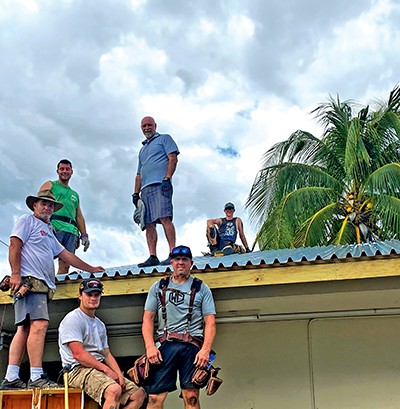
Nathanael Masson, Mjr George Hastings and Coleton Reid.
Bottom row, from left, John Reid, Luke Winsor and Len Winsor
And so it was with some trepidation that I embarked on a two-week mission trip to The Salvation Army Caribbean Territory, along with 22 others from across the Ontario Division, on February 4, 2024, where the sole focus was … building. That’s right, we were going to do construction work on Salvation Army facilities in Kingston, Jamaica—and we had 20 Rubbermaid totes packed full of tools and painting supplies along with us, lest anyone doubt our intentions!
When it comes to creating sacred spaces where individuals come to meet with God, I am good at setting the scene with words, or through music, or by the reading of Scripture or prayer. I’ve done so on beaches and in school gymnasiums and around backyard campfires, transforming nearly anywhere into a place where someone could meet with God. But I had never created a space that set the tone for a fresh encounter with God through the work of my hands. I had little to offer in terms of a construction skill set, and my relatively petite frame was not going to make me an asset when it came to hauling raw materials. And yet, I was determined not to become dead weight on the trip, and to find ways to contribute to the task at hand.
WORKING TOGETHER
And the task at hand was vast. Our first morning in Kingston, we toured the facilities we had come to work on: the Caribbean Territory College for Officer Training, The Salvation Army School for the Blind and Visually Impaired Children and Eastern Jamaica divisional headquarters (DHQ). As Joel Turley, our project lead, listed off project after project, my mind whirled with all that needed to be accomplished in two weeks. Plumbing needed to be repaired. A new roof constructed. Tiling replaced. A whole kitchen gutted and new cabinets built from scratch. And so much painting. How could we possibly get it all done?
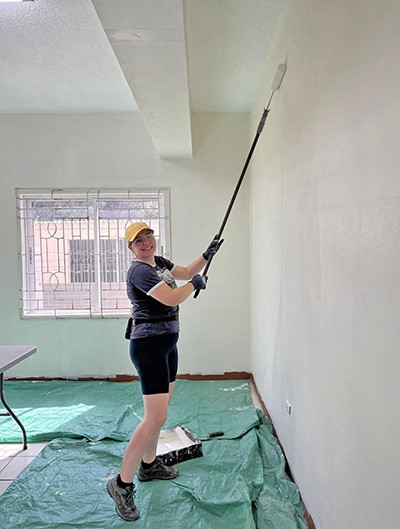
As American author and educator Helen Keller famously said, “Alone we can do so little; together we can do so much.” It was incredible to see how much the team accomplished. Within mere days the roof started to take shape, walls and cabinets were demolished to make way for custom builds, tiles were laid, toilets worked again, and dozens of gallons of paint were applied to walls and ceilings. Terry Harney, a professional painter on our team, taught me how to properly handle a paint roller, and soon I was keeping pace with the rest of the team and felt like I was really helping out.
The days were long. We rose for a 5:30 a.m. breakfast every day so we could beat the busy Kingston traffic on the way to our job sites. Work continued until at least 4 p.m. daily, when we would head back for cold showers, which were usually welcome after working in the Caribbean heat. A few local Jamaicans marvelled that we would work through the hottest portions of the day, but when time is of the essence you do what you must.
By the end of our two-week commitment, we had accomplished all we set out to do. While important updates were made to the training college and the School for the Blind, the bulk of the work had occurred at Eastern Jamaica DHQ, and the transformation there was significant. The divisional ministry team now had a bright, clean and inviting worship space, meeting room, dining room, bathrooms and kitchen—everything needed to host events and gatherings. Even the exterior of the compound had been tidied and refreshed.
And while seeing the spaces transformed and praying over the finished rooms on our final day together was a moving and Spirit-filled experience, it couldn’t compare to the joy of receiving photos the following weekend from divisional leaders, Majors Marlene and Nana Boakye-Agyemang, of officers’ councils being held in the facility we had just renovated.
This reminded me that while intentional spaces for worship and service can be valuable mission tools, what really matters is the human connections made within them.
MAKING CONNECTIONS
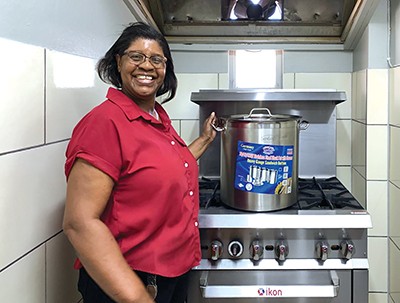
Eastern Jamaica Div, in the new kitchen (Photo: Julie Santilli)
Connections like the one I made with Major Marlene as we spoke about our mutual experiences serving in women’s ministries, and when she cast a vision for me of how she hoped to use DHQ to host events such as youth councils, and possibly to house women looking for a safe haven in the apartments on the second and third floors. Connections like those made when we worshipped with Rae Town Corps on Sunday morning, where a young girl spent the better part of the service braiding my hair, curious about how different it was from her own.
Connections like those forged between our mission team members and the Caribbean cadets when they invited us to play dominoes with them and their families, as we shared holy laughter and bonded over double 12s and epic wins (and losses!).
Connections like those founded on shared names—team members Sandra Randall and Sandra Reid were thrilled to meet Major Sandra Mitchell, who oversees the School for the Blind, and Nathanael Masson shared a special connection with one of the cadet’s sons, also named Nathanael, as they bonded over games of soccer.
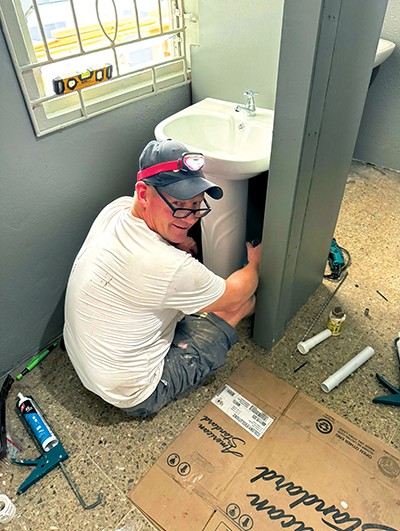
Connections like those built between team members as we conversed with one another, paint roller or nail gun in hand, about our own hopes and fears and prayers. You can’t work that closely alongside others and not get a sense of one another’s hearts.
As Major Chris Rideout, divisional secretary for mission resource in the Ontario Division, shares, “It was a great joy to see so many people with different skills join us from Ontario to make a significant difference to the lives and ministry of our fellow brothers and sisters in Kingston.”
The focus never really was on the buildings, 20 Rubbermaid totes of tools aside. While there is great value in the work we accomplished, the greatest value is in the significant difference it will make to the lives and lived ministry of both those on the mission team and those who will use the updated facilities to be a transforming influence in their communities.
CAPTAIN LAURA VAN SCHAICK is the corps officer at Barrhaven Church in Ottawa, and the divisional secretary for women’s ministries in the Ontario Division.
This story is from:




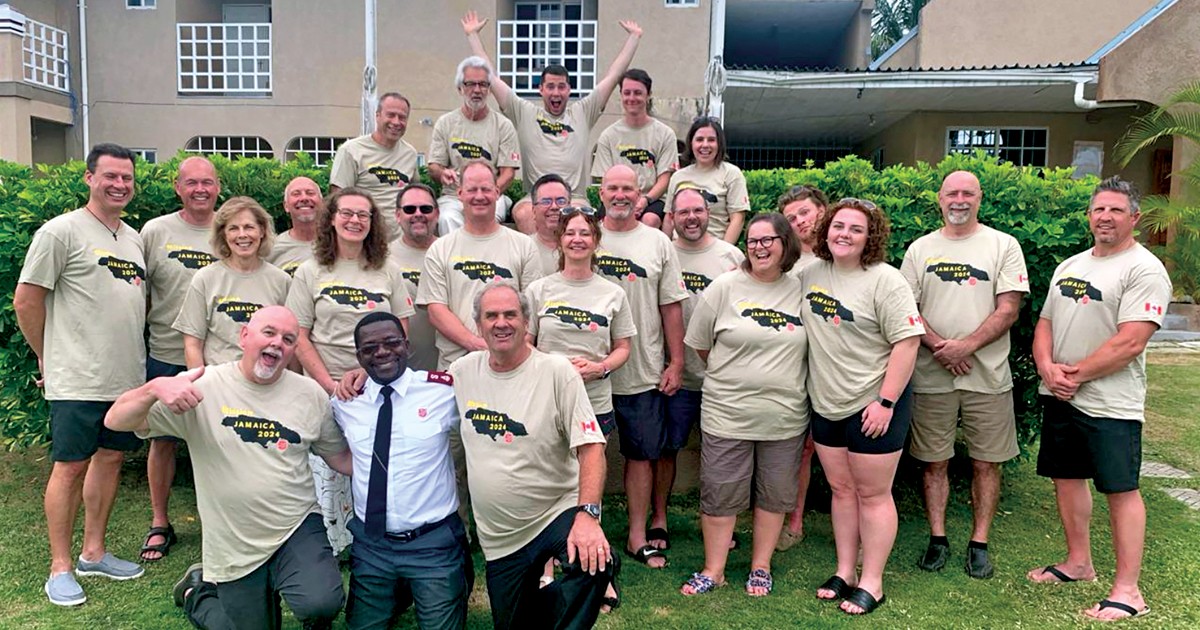

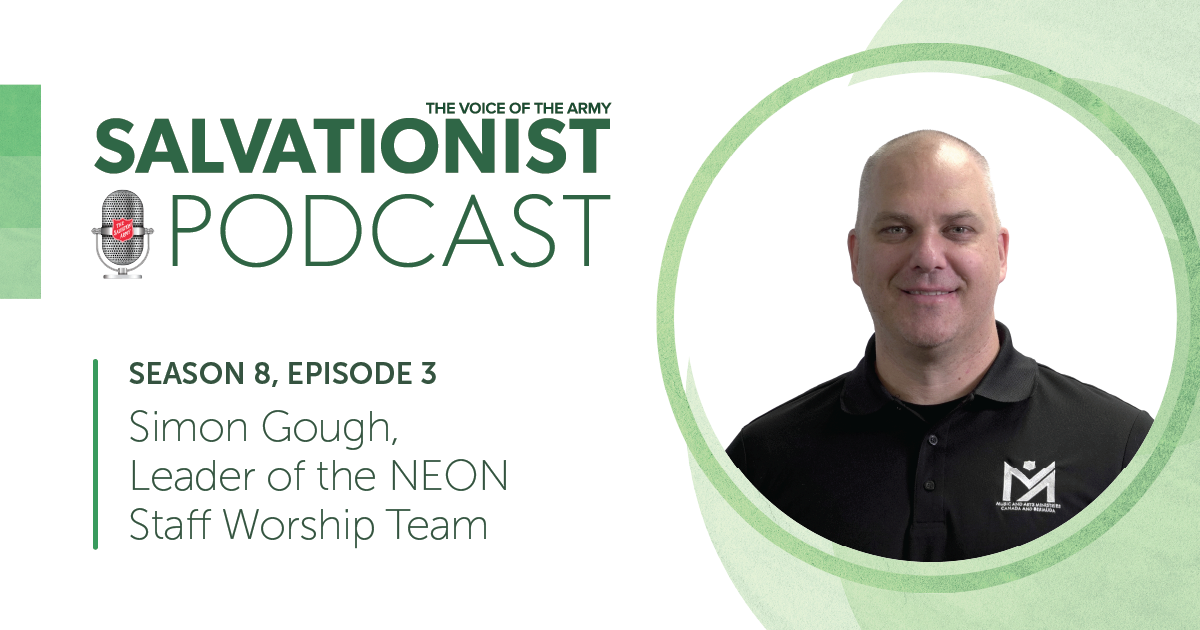



Leave a Comment